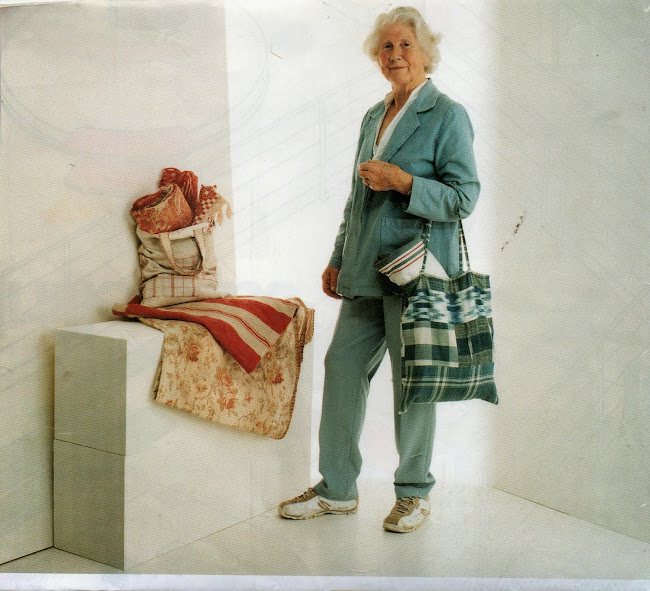Getting my business going! |When I came to the West Country and decided to sell second-hand curtains from France, especially large ones from the chateaux which suited my own house and many other Georgian houses in the Bath area, I had to get myself known and so signed up to the first Bath Decorative Fair held in the Pavilion in Bath. It was the greatest fun and I loved every one of the 12 following I attended. Hundreds came by and often commented on my rather light-hearted French Brocante look and I made many firm friends who shared my taste for the pretty, unusual and inexpensive adornments. The mood changed from the rather heavy over- frilled, over- fringed, rather shabby, Victorian (known to me as the frilly knickers look) to something rather simpler and in better taste and adapted to modern living, so I was able to combine my linens and fine cotton prints with kitchenalia and country living decorations, as well as hanging on to a few tassels and fringes.
I tried going to the big fairs like Shepton Mallet, which I found very cramped for selling space and very tiring, and frankly, most of the passing crowds were not interested in decorating. So when the chance to attend a really up-market decorative fair at Eastnor Castle, Ledbury, came up, I signed on with a new friend with huge talent, Polly Lyster. who was deep in indigo-dyeing mood!
We decided to wow everyone with an all blue and white stand, no other colours allowed. Polly provided her blue sheets as a background and then hung tie-dyed chiffon and silk shawls and scarves, with a good selection of the dazzling ikat cushions she has always excelled at. I provided lots of chunky linen and hemp sheets and drapes in cream and white shades and there was a good assortment of French cream farmers' shirts, sturdy blue work aprons and striped tea towels.We were delighted to find several other beginner


designers were there to show their skills for the first time to the public - wacky hats, and beautiful linen hand-embroidered from the Volga Linen Co. We were in a prime position opposite the main entrance in the marquee (early booking always helps for a good spot) - and one of the first visitors was Hester Paige, features editor of Country Living, and she made a bee-line towards us. What followed is now history but it was very exciting.! Polly and her family and home were featured in the magazine which lead to many good sales and contacts, she was invited to show at their big Christmas Fair in London and that was only the beginning -- her name and business have prospered ever since, always backed by her talent and extremely hard work. It's so good to have a lucky break at the beginning of your career. And I would say, you should always be ready and willing to chance a new opportunity - don't let it go by as offers can be very few and far between - and also be sure to look after generous friends and contacts and show them some gratitude! Volga Linen has become a very well-known brand with gorgeous catalogues, an outlet in London and a warehouse in Suffolk - well done Theresa Tollemache! who launched it all because she had a Russian grandmother and was inspired by her embroidered linen from the banks of the river Volga. Inspiration and industry seem to be the successful combination for starting a new business!














